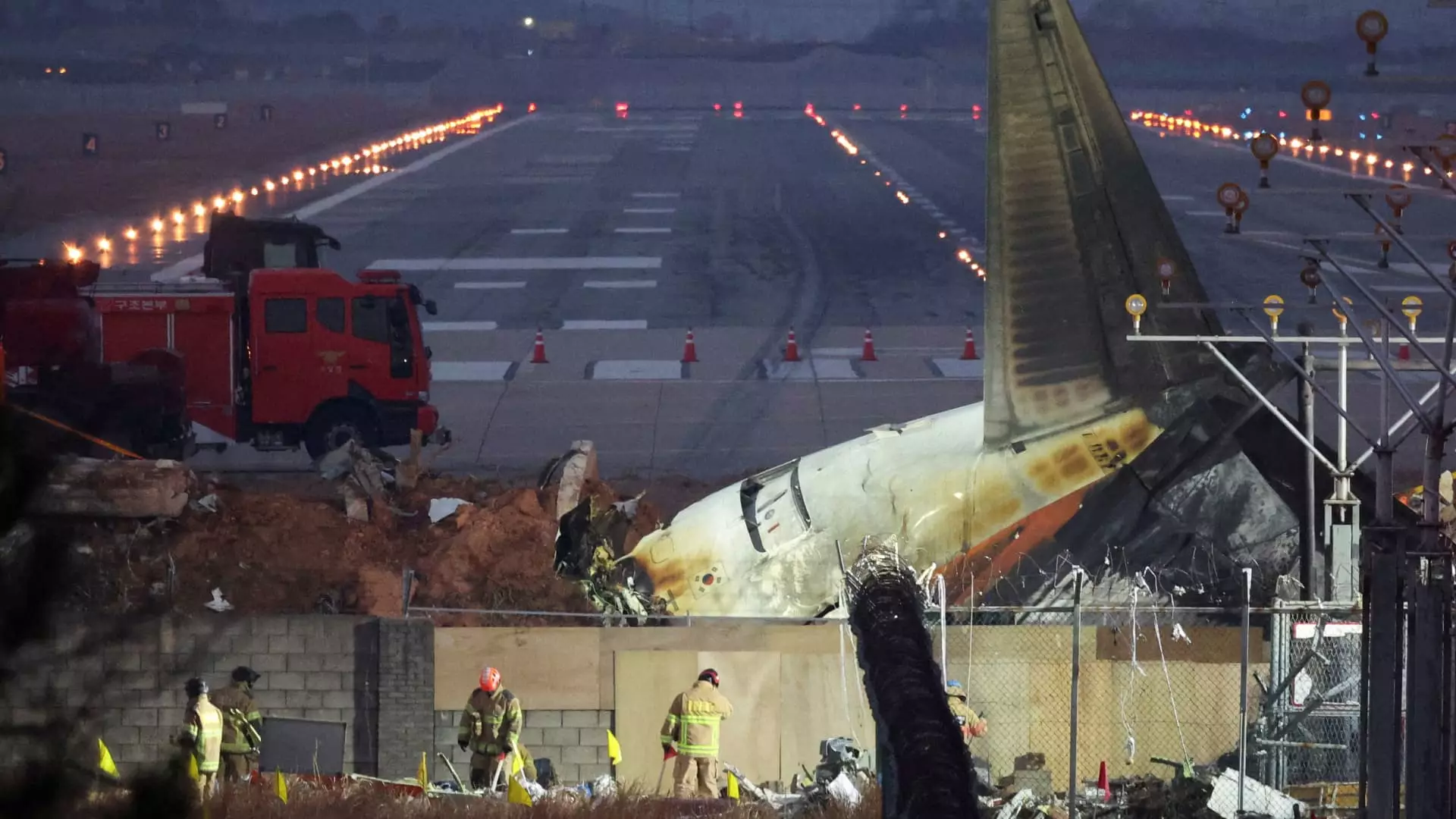The tragic incident involving Jeju Air Flight 7C2216 has unleashed a wave of scrutiny towards airport design and safety measures. On a harrowing Sunday morning, the Boeing 737-800 fell victim to an unfortunate combination of operational failure and infrastructural inadequacies, resulting in a crash that claimed the lives of nearly all passengers except for two. The incident has highlighted the critical importance of design elements in ensuring the safety of air travel, prompting questions about how future tragedies can be avoided.
At the core of this tragic event lies the issue of runway safety features. Such elements are not merely an afterthought; they serve as essential safeguards to prevent accidents from escalating into catastrophic incidents. In this case, an unyielding mound of dirt coupled with a concrete wall positioned beyond the end of the runway served as a fatal barrier. Aviation safety experts like Todd Curtis emphasize that such a configuration may have significantly hindered the aircraft’s ability to come to a complete stop after landing, indicating a profound oversight in airport design.
Evidence from the aftermath shows that the plane had already commenced its landing process, suggesting that had it not encountered this wall, the outcome could have been vastly different. Aviation consultant John Cox noted that most fatalities seemingly resulted from blunt force trauma upon impact with this barrier. By contrasting this with practices seen at airports like LaGuardia, where engineered material arresting systems (EMAS) are in place, one can appreciate the stark failures of Muan International Airport’s runway construction.
In the wake of the crash, the investigative process promises to be meticulous and painstaking. The circumstances surrounding the incident are still being unraveled, as probes examine everything from the maintenance history of the aircraft to potential factors contributing to pilot incapacitation. Initial reports hint at a possible bird strike leading to engine issues, complicating the causal web further.
With experts announcing that investigations can extend over several months, it is crucial to recognize the complexity of the aviation environment. Investigators will likely also delve into the implications of current safety regulations and infrastructural designs that prioritize pilot error over structural integrity.
The conversation around this tragedy necessitates a more profound contemplation of airport safety standards. Experts have underscored the importance of implementing frangible barriers—those designed to break apart upon impact—in areas adjacent to runways. Such measures could provide an additional life-saving buffer between aircraft and hazardous surroundings.
In light of this catastrophic event, air travel experts and regulatory bodies must assess the adequacy of existing airport designs. Future steps should include revising guidelines to ensure that safety measures dynamically evolve with emerging data, thereby drastically reducing the chances of fatalities in aviation incidents.
The disaster involving Jeju Air Flight 7C2216 not only highlights individual operational failures but also exposes significant flaws in airport infrastructure and safety provisions. As the industry grapples with this devastating incident, it is imperative that all parties involved look towards better designs, effective regulations, and enhanced training—all aimed at preventing such tragedies from ever occurring again.


Leave a Reply